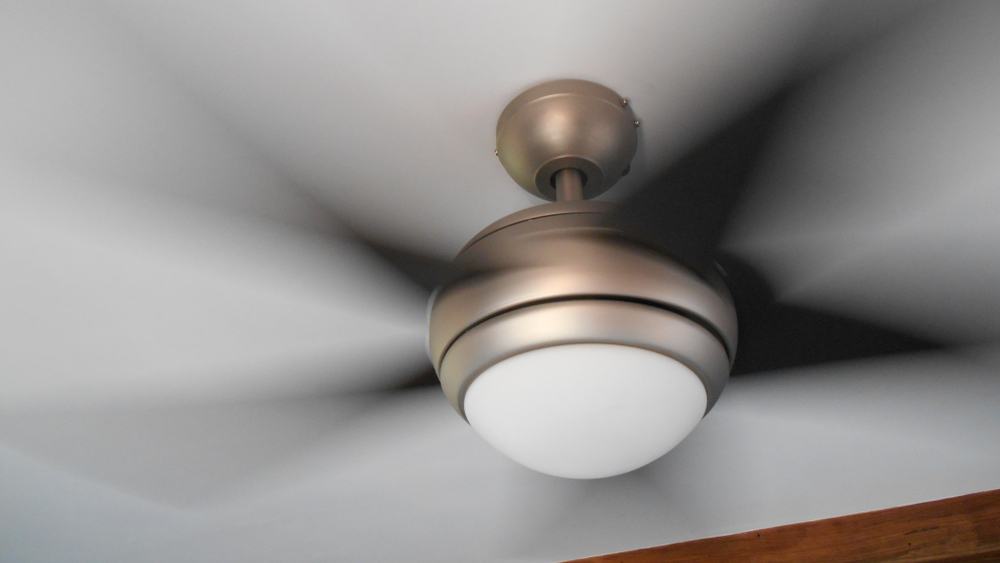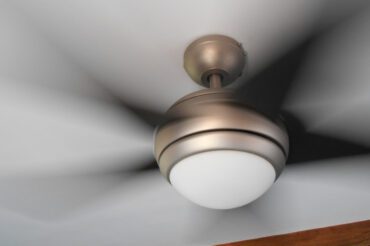
What if one appliance could make your room more comfortable, lower your heating and cooling bill, produce useful lighting, and add a splash of decorating style all at once? Many people would be surprised to learn that the appliance is an affordable, time-tested ceiling fan. Ceiling fans cool homes across the globe, but many homeowners don’t know how to use them correctly.
Invented in the late 1880s, the use of ceiling fans steadily increased in U.S. households throughout the first half of the 20th century as they became more affordable to own. With the introduction of air conditioning in the 1950s, ceiling fans lost popularity but made a major comeback in the early 1970s during the energy crisis. Since then, ceiling fans have literally become a constant “fixture” in most homes. Top Notch Heating, Cooling & Plumbing helps keeps homes cool with ceiling fan installation services. We’ll explain the right way to use a ceiling fan to keep your home comfortable and when it should be on.
Using Your Ceiling Fans to Cool Your Home Alongside Air Conditioners
If you’re like most homeowners, you want to maximize the performance of your air conditioner without spending a fortune on cooling costs. While you may think that turning off your ceiling fan while the AC is running will help you achieve this, you might be surprised to discover that the opposite is true. In fact, using your ceiling fan in conjunction with your air conditioner can improve the cooling capacity of your home and save you money on your energy bills.
When it comes to optimizing your AC’s performance, it’s important to note that air conditioning units work by removing heat from indoor spaces. This is accomplished by drawing hot air from inside your home and transferring the heat energy outside. However, if the air inside your home is already hot and stagnant, it can take longer for your AC to cool the entire space, leading to increased energy usage and higher bills.
This is where ceiling fans come in. By circulating the air in your home, a ceiling fan helps by creating a more comfortable indoor environment by eliminating stagnant air and creating a breeze. This can make you feel cooler even when the ambient temperature is somewhat high, thereby reducing the amount of AC usage required.
How Do Ceiling Fans Cool Homes?
So, how exactly do ceiling fans cool your home? It’s not magic, but rather a clever manipulation of air currents. During the summer months, your ceiling fan should rotate in a counterclockwise direction. This is because when the fan spins counterclockwise, it pushes cool air down to the floor, creating a wind chill effect on the skin which makes the room feel cooler than it is. This is because the moving air increases the rate at which moisture evaporates from your skin, leading to a cooling sensation. Additionally, as the air moves, it helps to carry heat away from your body, making you feel even cooler.
Benefits of Ceiling Fans
Ceiling fans offer a host of benefits to homeowners. These include:
- Reduced Energy Costs: Ceiling fans don’t actually reduce the temperature of a room. However, the air they circulate can make a room feel a few degrees cooler. By setting the thermostat a little higher to take advantage of the fan’s air circulation, you can save 30 to 40 percent on your utility bill. Ceiling fans with the Energy Star label can help you save even more. Since your air conditioner will have to use less energy to make your home comfortable, using your ac and ceiling fan at the same time can help you save energy and money.
- Added Decorating Style: With so many different kinds of ceiling fans on the market, it’s easy to find the perfect one to complement any decorating style. Ceiling fans for kids’ rooms are available in all kinds of themes from ladybugs, flowers, globes, sports, and more. A unique ceiling fan is not only functional, but it can also serve as the focal point of a room. Some fans even offer interchangeable blades so that you can change the style of the fan without having to replace the motor.
- Layered Lighting: Most ceiling fans come with an added lighting fixture that you can use to add a beautiful, layered texture of light to your room.
- Versatile Placement: Ceiling fans aren’t just for the living room. Install them in bedrooms, kitchens, porches, or any room you want constant air circulation.
- Year-Round Use: You might think ceiling fans are just for summer use. Not true. Ceiling fans have a switch on the base that allows the blades to reverse to help disperse warm air downward during the winter.
Things to Consider Before Installing a Ceiling Fan
The Department of Energy advises homeowners to use the following guidelines when installing a ceiling fan:
- Ensure the room you want to install a fan in has at least an eight-foot ceiling.
- Ceiling fan blades should be at least eight inches below the ceiling and at least 18 inches away from the walls.
- Choose a 36-inch to 44-inch diameter fan to cool a 225-square-foot room such as a bedroom or office.
- Use a 52-inch or larger diameter fan to cool larger spaces like kitchens and living areas.
- Choose a ceiling fan with the Energy Star symbol to help with your home’s energy efficiency.
Talk to Top Notch For More Home Comfort Tips
Top Notch Heating and Cooling are your go-to resource for making sure your Kansas City home is cool and comfortable. It’s a smart idea to use your ceiling fan and air conditioner in tandem to reap the benefits of energy efficiency and a better home environment. If you find that running your ceiling fans are not helping with your air conditioner’s performance, you may need service. Call Top Notch to schedule air conditioning repairs today.







